Discover how plants absorb water through their roots with this celery and food coloring science experiment. With just a few items, your kids will learn about osmosis and capillary action.
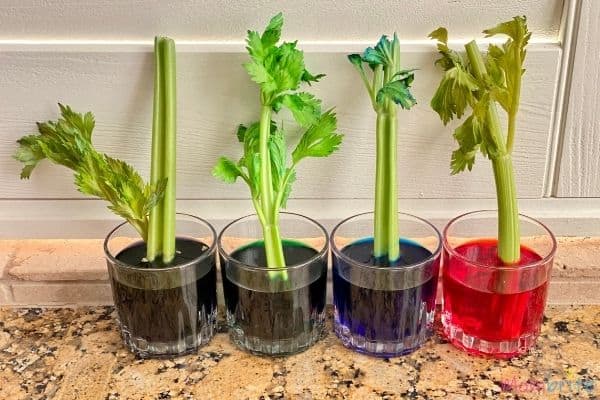
When you hand your kids the water hose to water plants, the first thing they do is probably start spraying the leaves and the above-ground portion of the plants. The best way to water plants is actually water at their roots. The question then is, how do plants get water from their roots all the way up to their leaves?
Through a process called capillary action, water is able to climb up the little tubes in the plants and travel to the different parts of a plant. With this simple and easy science experiment, you can show your kids capillary action at work.
Celery Experiment
Materials:
- Fresh celery stalks with leaves. The more leaves the better!
- Clear glass or jar
- Food coloring
Step-by-Step Instructions:
- Fill each glass or jar with water. Don’t go over ¾ way full, leave room for the celery stalk.
- Add a few drops of different colors of food coloring in each glass.
- Cut about 1 inch off the bottom of the celery stalks.
- Place the celery stalks in the colored water. I recommend using the lighter stalks near the center with the most leaves; they will show the most color.
- Wait about 3 hours and check on the celery stalks. Did the colors on the leaves change?
- Leave the celery overnight in the colored water and check on them again the next day. Are the colors on the leaves more visible?
- If desired, leave the celery stalks again in the colored water for another night and observe the results.
Celery and Food Coloring Science Experiment Observations
How did your celery stalks turn out? We were amazed at the results! I did wish we had more leaves on our celery stalks so that the colors would show more, but there were enough to see the capillary action at work.
24 Hours

After we left the celery stalks overnight in the colored water, there was a significant amount of color in the leaves. It’s a little difficult to see from afar, so let’s go in for a closer look.
The celery stalk that seemed to have absorbed the most water was the one in blue water. You can easily see the bright blue colors in the leaves.
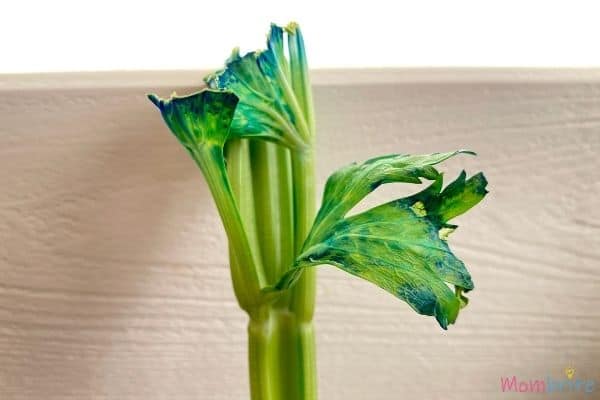
The celery stalk in the red water turned yellow, which makes sense as green plus red equals yellow. You can see the red water has been absorbed all the way up to the leaves.
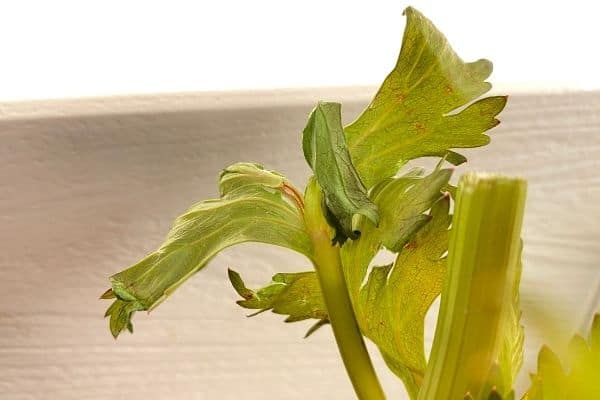
I was worried that the green water in the celery stalk wasn’t going to be perceivable, but I was wrong! You can definitely see the entire celery stalk and the leaves turned a darker green.
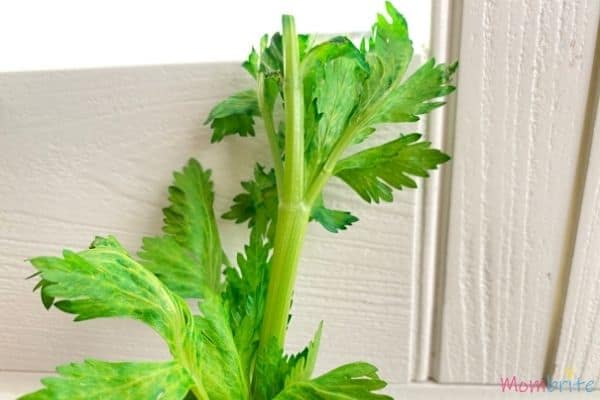
The one in purple water seemed to have difficulty absorbing the water. Even though you can see the purple slightly in the leaves, it wasn’t as apparent as the other three.
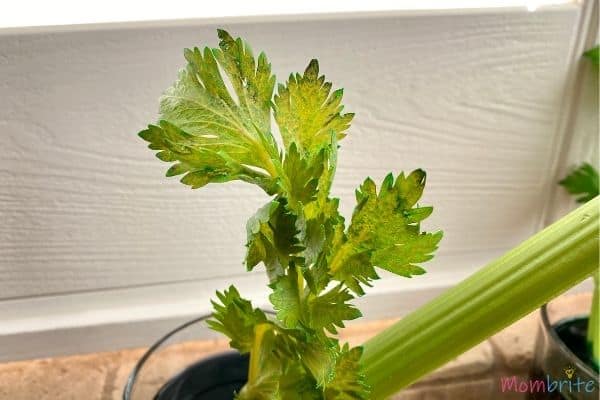
48 Hours
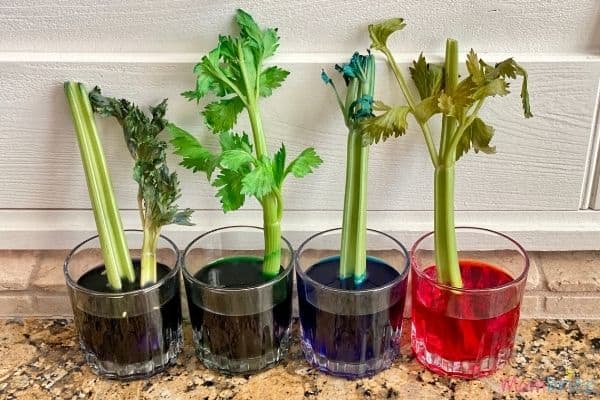
We left the celery stalks in the colored waters one more night. You can see that the leaves are more vibrant, but they are also starting to dry out.
The celery stalk in blue water in particular really soaked up the color. You can see that even the stalk changed color.
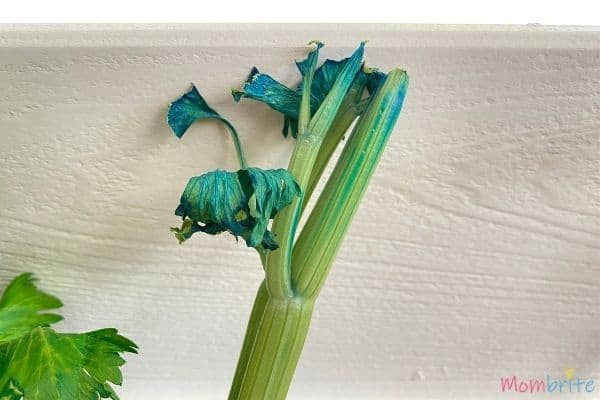
To see the capillary action internally, trim the bottom of the stalks with a knife. You can see all the tubes that drew up water from the bottom of the stalk to the leaves.
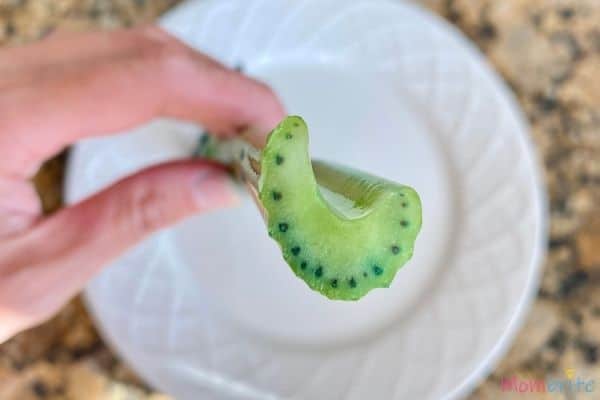
You can go a step further and break a piece off the bottom and peel it back. Now you can clearly see how the color traveled through the stalks.
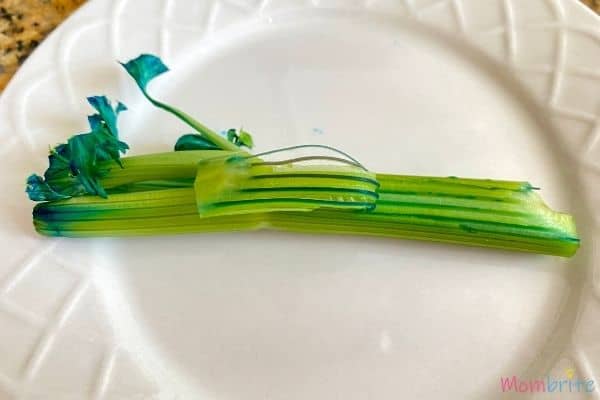
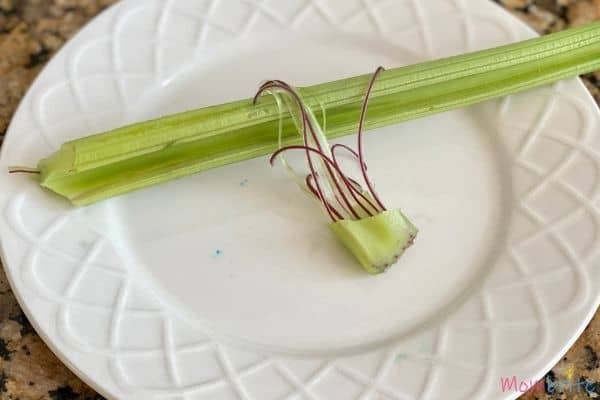
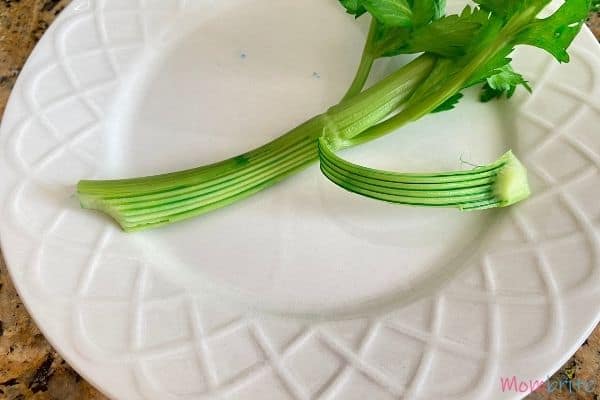
The red tubes reminded me of the blood vessels in our body!
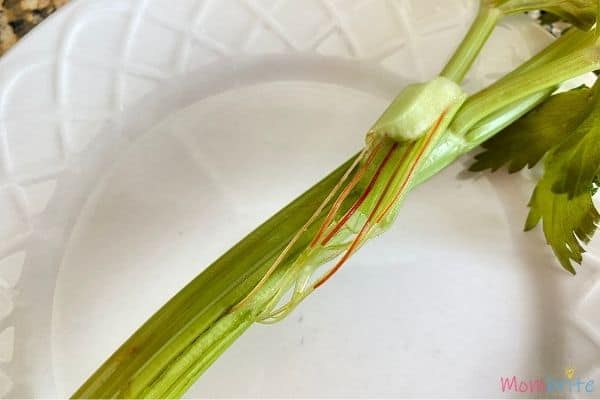
The Science Behind the Celery Experiment
A stalk of celery is made up of lots of small tubes (like straws). They have a fancy name – xylem tubes. These tubes have the job of moving water up and around the plant. When the celery is growing, the tubes take water from the roots to the leaves.
When the water moves up the tubes it is called capillary action. Have you ever laid a sponge down on top of a few drops of water? Does the water stay under the sponge? No! It climbs up into the sponge, right? That is because the sponge has lots of little bitty holes (or tubes).
Water drops like to stick to the walls of the tubes, and they like to stick to each other. It’s like when you are climbing up the side of a cliff with a team. As you go up, you pull the next teammate with you, and he pulls the next one with him, etc. So the result is the water kind of hold hands and travels up the tubes together. That is what happens in the tubes in the celery. The water drops work together to travel up into the celery stalk and leaves.
We can see capillary action at work in our bodies too! Our blood vessels move our blood up and around our bodies. The tear ducts in our eyes allow the tears to move up and out of our bodies.
Final Thoughts on the Celery Experiment
The celery and food coloring experiment was instrumental in me showing my kids how plants absorb water. It clearly demonstrates how capillary action works. And it was so easy to do!
If your kids liked this experiment, you can always try out different color food coloring and see how well the celery stalks absorb the water. As you can see above, blue was the winner when it came to how well the colors showed in the leaves and stalk.
What other things can you put in the colored water and watch capillary action happen right in front of your eyes? We love the rainbow walking water experiment and the growing a rainbow experiment using paper towels! They are a lot quicker than this celery experiment with amazing results, so make sure you check them out.
Related Posts:
